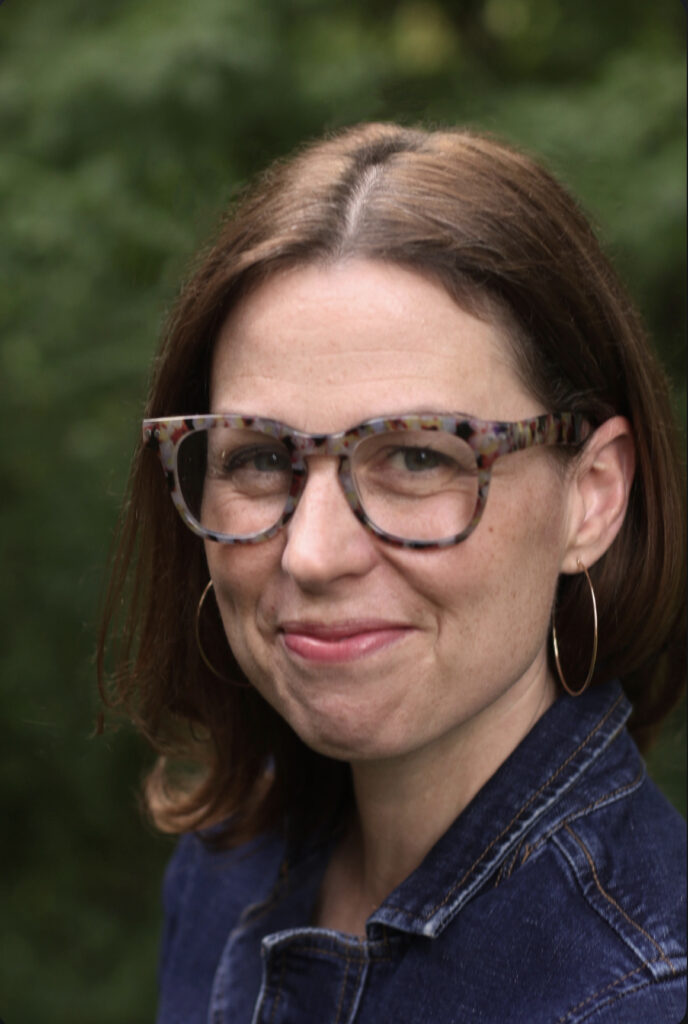Dear SMC Readers, You are in for a treat. This week, you meet my friend, Jenny Bird, a journalist, writer, mother, wife, chef for the under-resourced/marginalized…a woman of great reflection and substance. I met Jenny when she was as young as the children about whom she writes this week. I learn from Jenny on a regular basis. So get yourself a cup of coffee, and a good friend to discuss what you are about to read! Thank you Jenny, and thank you SMC readers. I treasure you both!

Neighborhood Mythos

Sometimes, when I’m driving my kids around in the minivan to their extracurricular activities, we listen to the radio. But often I talk to them. I sound a bit like a tour guide.
“Hey, see that steeple? That’s the building where Mommy went to preschool.”
“Do you remember your daycare, with Miss Gail? It’s that white house right there!”
“That’s the parking garage where I parked when I drove myself to the hospital when I was in labor with you!”
“There’s where the lady found our dog Moose on the highway when he ran away.”
It seems mundane, but the kids eat it up. With my narration, I’m actually sowing seeds.
When I point out where I went to school and where they went to school, the message is: I’m from here and so are you. We have longstanding ties to this community. When I show them the parking garage, it’s a message of toughness: I’m a badass who drove myself to the hospital before I pushed out an eight-pound baby. Noting where our dog nearly died on the highway: Sometimes, there are good samaritans who come to the rescue.
Through my asides and stories, I communicate how I see the world and offer my children scaffolding to make meaning for themselves. Often, I tell these stories to make them laugh. Sometimes I’m the fool of the story and sometimes I’m the hero, and both could happen within the same anecdote. I borrow the best stories of people they know, friends and relatives, and tell them those too.
In moral philosophy, the branch of philosophy that examines right and wrong in the world, there are three schools. One asks the meaning of right and wrong and what our duty is in each situation. The second seeks the action that will bring the most benefit and least harm to the largest number of people. And the third? It uses narrative to help us build meaning and find our way to virtue. The Greeks called it mythos, and they didn’t mean myth like we do, as in a false belief. They meant stories that illuminated their world when common language could not.
This approach also appears in the gospels. Matthew Chapter 13, Verse 35, speaks of Jesus’ use of parables to teach: “This was to fulfill what was spoken by the prophet ‘I will open my mouth in parables; I will utter what has been hidden since the foundation of the world.’”
Recently, my son got a bad haircut. He cried in the chair as the stylist was cutting it too short, and for some time afterward. My immediate reaction was to console him, to tell him it was temporary, to remind him he was strong enough for this setback and that his friends would still love him no matter how he looked. But that approach just made him cry harder. All the wise slogans and aphorisms in the world couldn’t fix this.
But then I turned to our shared language of stories. I told him about one of my own unforgettably bad haircuts, reaching back through memory to give as many details as possible. He stopped crying and listened. Then I told him about the time his godmother accidentally got a mullet, and he cracked his first smile.
Pakistani novelist Mohsin Hamid speaks of the human ability to face loss with dignity, something that he insists the older generation has a responsibility to teach the younger generation. He believes that as societal change accelerates, our traditional ways of dealing with transformation and loss, including family networks, folk stories, and religious rituals, are diminishing. “It’s not the case that we get to say we aren’t going to talk about these ‘spiritual matters,’” he says. “The questions remain, and if they are not dealt with, a sense of incredible anxiety, a sense of dis-ease, sets in. We need a way to engage with this stuff.”
We can tell stories about things much more significant than haircuts. Our stories reveal what it means to succeed or fail, how we survive humiliation and loss, and how we live with the knowledge that we will all eventually pass away from this earth.
As I grapple with the questions of midlife, including the loss of the unbridled potential of youth, as well as the aging and death of loved ones, I don’t have answers. But I have my mythos. I have the stories my parents told me, and even a few from my grandparents. I have stories that tie me to old friends, the ones that I polish off and bring out when we get together. When regular words fail, our shared stories connect us to the deeper wisdom of our collective identity and provide us with the remedies of the ages.
“What did you do at school today?” Sometimes I’m still tempted to ask the old conversation-killing question when my kids jump in the car each afternoon. Instead, I’ll keep offering my little tales. And I’ll wait for them to tell me a story of their own.
